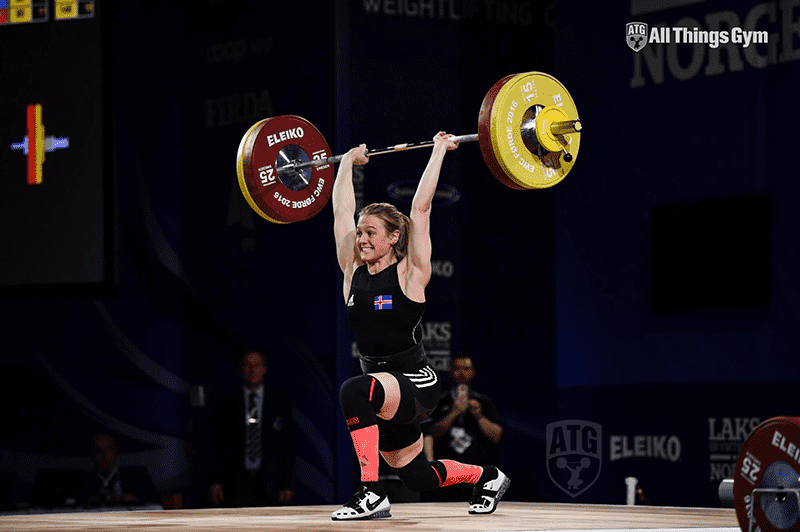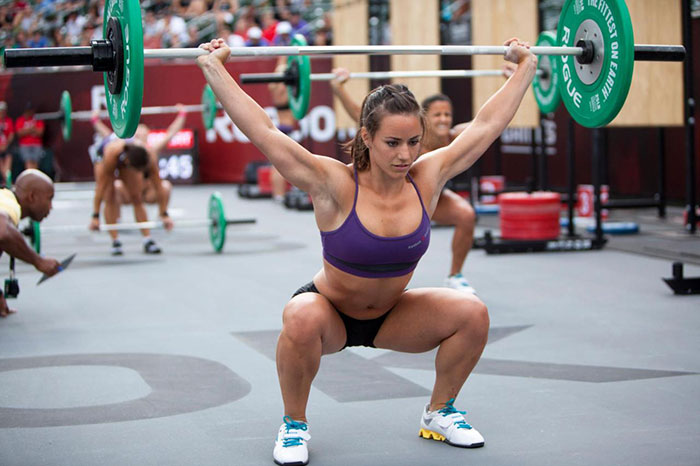

Olympic weightlifting is a sport in which the athlete attempts a
maximum-weight single lift of a barbell loaded with weight plates.
The
two competition lifts are the snatch and the
clean and jerk.
Learn more on:
Wikipedia
The snatch is a wide-grip, one-move lift and one of the two competition
lifts for the sport of Olympic weightlifting.
In this movement,
the lifter takes a weighted barbell from the floor to the overhead
position in one, fluid movement without stopping at the shoulders. In
competition, they can do this by receiving the load overhead in the
overhead squat and standing up >> squat snatch << , or
by receiving the load overhead in a partial squat and standing up
>> power snatch << .

The clean and jerk is a close-grip, two-move lift and one of the two
competition lifts for the sport of Olympic weightlifting.
The
lifter takes a weighted barbell from the floor to the front of the
shoulders in one fluid movement, either receiving the barbell in the front
squat >> squat clean << or partial squat
>> power clean << .
The jerk is the second
part of the clean and jerk movement. The athlete takes a load from the
front of the shoulders (front rack) to the overhead position (elbows fully
extended) in one explosive movement, without receiving the bar with bent
elbows (called a press out). There are various styles of jerks that a
lifter can use to place the barbell overhead, however, all of them utilize
leg strength and power to dip and drive the bar overhead
>> power jerk, push jerk, split jerk, squat jerk << .
All of these jerk variations are acceptable in a formal competition.

